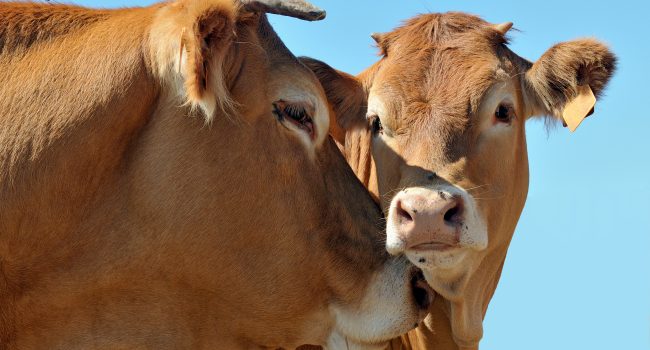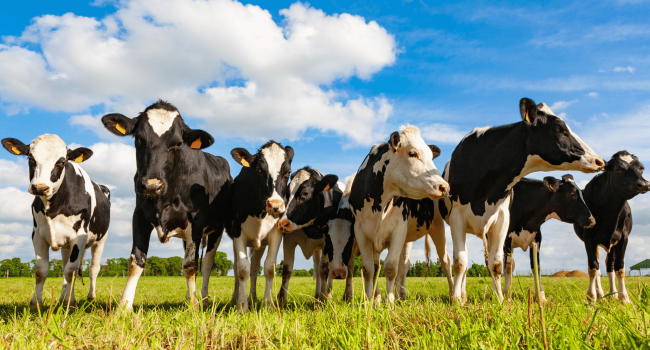The process of weaning, which generally occurs 21-28 days after birth, is one of the most stressful events in the pig’s life, as it entails dramatic changes in both nutrition and environment (Campbell et al., 2013).
The animals experience stresses due to physiological, environmental and social challenges when weaned from the sow, which in turn contribute to intestinal and immune dysfunctions.
These nutritional changes, social stress and insufficient immune competency have a strong impact on the piglet’s health, as they lead to post-weaning diarrhoea (PWD).
As it results in either piglet death or poor weight gain in surviving piglets, but also poor performance in the long term throughout the rearing and fattening phases, PWD is a major cause of economic losses for the pig industry and producers (Bonetti et al., 2021).
Zinc oxide supplementation
Supplementation at pharmacological doses of dietary zinc in the form of zinc oxide (ZnO; 2000 to 3000 ppm) is a consolidated practice that allows efficient control of PWD in post-weaning piglets (McCracken et al., 1999). Although the precise mechanism of action of ZnO against PWD remains elusive, many studies have hypothesized and demonstrated its positive effects, exerted in a multifactorial manner.
The main mechanism of action of ZnO appears to be linked to a substantial enhancement in nutrient absorption and intestinal morphology. Specifically, it has been shown that ZnO increases nutrient digestibility and the activity of digestive enzymes (Pearce et al., 2015).
Several other beneficial effects of ZnO have been hypothesized on different targets, such as the immune system, digestive secretion and intestinal architecture (Grilli et al., 2015).
Moreover, the positive effects of Zinc oxide on internal mucosa can also be linked to its antioxidant properties.
However, despite a potential antioxidant mechanism, the actual effect of ZnO against the bacterium Escherichia coli F4 (K88), the main causative agent of PWD, is moderate; it is thus believed that the action of ZnO on bacterial infection is different from direct antimicrobial activity (Mores et al., 1998).
Concerns over the use of Zinc oxide for pigs
Despite the beneficial effects of Zinc oxide on the reduction of post-weaning diarrhoea in piglets, its substantial and prolonged use at pharmacological levels in pig production has raised several concerns, such as the potential onset of toxic effects due to the accumulation of ZnO in the tissues (kidney, liver, pancreas) of the animals (Burrough et al., 2019).
Besides this toxicity to the pigs after extensively elevated or extensively prolonged administration, the use of zinc oxide raises several other issues.
One of these issues concerns the considerable risks to the environment, following pollution arising from the application of zinc-rich manure on fields.
Several studies have also shown that ZnO supplementation in piglets might contribute to an acceleration of antibiotic resistance gene spread, an increase in heavy metal tolerance gene spread, and also possibly a modification of the microbiota via a modification of the bacterial population composition (Aarestrup et al., 2004).
Although zinc is an essential nutrient and can have positive effects on pig health and growth, increasing concerns regarding the severe environmental hazards and the antimicrobial-resistance threats led the European Medicines Agency (EMA) to mandate a future free from pharmacological levels of ZnO by 2022, this decision being supported by the European Commission.
As ZnO will thus only be usable as a feed additive with a legal limit of 150 ppm of total Zn in complete feed, and as this dose is unlikely to exert the same effects as pharmacological levels of ZnO, non-traditional approaches for combating PWD are urgently required.
Following the European Commission’s decision to eliminate ZnO at pharmacological doses, which became effective as of June 2022, important swine production markets such as China have implemented the same policy.
Alternatives to Zinc oxide to reduce post-weaning diarrhea for pigs
Extensive research and field work have been directed towards improving management practices and designing nutritional strategies and feed additives, in order to replace the use of therapeutic doses of Zinc oxide in post-weaning piglet diet.
Poor environmental conditions are considered to be noteworthy factors to PWD onset; specifically, poor housing hygiene triggers a background inflammation status that may intensify other stressors. Careful running of post-weaning facilities (heating, ventilation, etc.) is therefore essential, with a focus on preventive actions and management (Rhouma et al., 2017).
Strategies that can help piglets experience a smooth transition from their lactation environment to their post-weaning environment also include, for example:
- minimum weaning weight of 7 kg; ideal weaning age of 28 days minimum;
- provision of quality water, and easy access to drinkers;
- access to fresh feed: since it is known that extensive periods of fasting make piglets susceptible to health disturbances, the feed intake must be improved in the first 10 days post-weaning, with a target of at least 280 g/day during this period;
- good feed quality, i.e., high palatability and digestibility of pre-starter diet, in order to avoid high fermentation and E. coli proliferation in the large intestine;
- low-protein diets and high-fibre diets (e.g. based on wheat bran (Molist et al., 2011)).
Finally, ZnO feeding alternatives can also be considered, which each have advantages and drawbacks, and they may be tested in vitro to study their influence on pig microbiota.
A non-exhaustive list includes: organic acids, glycerides of short- and medium-chain fatty acids, enzymatically hydrolysed yeast products, essential oils and nature-identical compounds, polyphenol-rich extracts, antimicrobial peptides (e.g. Macleaya cordata extract, B. subtilis), egg yolk antibodies, spray-dried plasma (Bonetti et al., 2021).
Reduction of ZnO concentrations can also be achieved via the microencapsulation technology (Cho et al., 2019).
Conclusion
The complexity of the supposed multi-factorial and multi-target action of Zinc oxide makes it difficult to find innovative alternatives for this compound. Management of the weaning phase for piglets will probably require a combination of strategies and tools, in order to develop a novel approach against PWD involving environmentally-friendly molecules in a context of biosafety and animal welfare.
![[Blog] Zinc oxide and post-weaning challenges](https://www.premix.adm.com/wp-content/uploads/2022/07/young-piglets-in-pen_AdobeStock_202760169-1-scaled-1800x600.jpeg)

